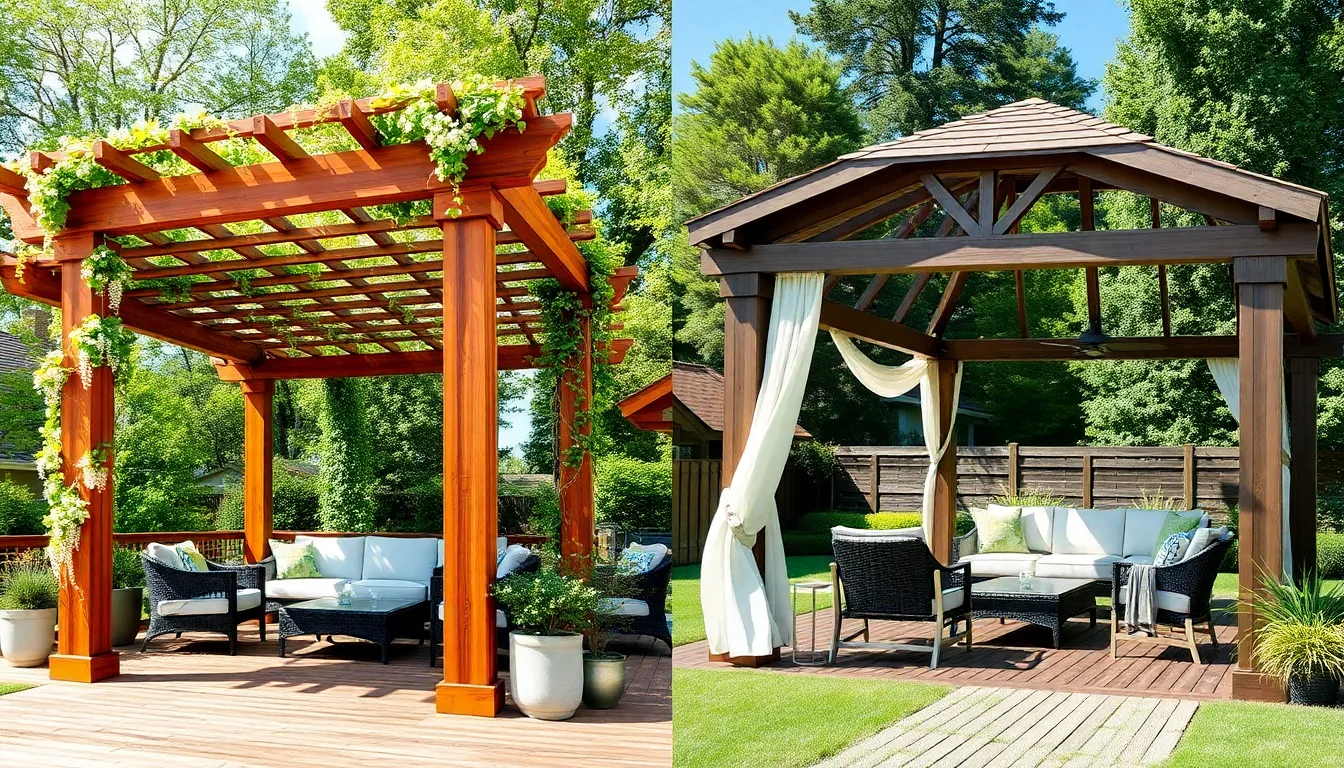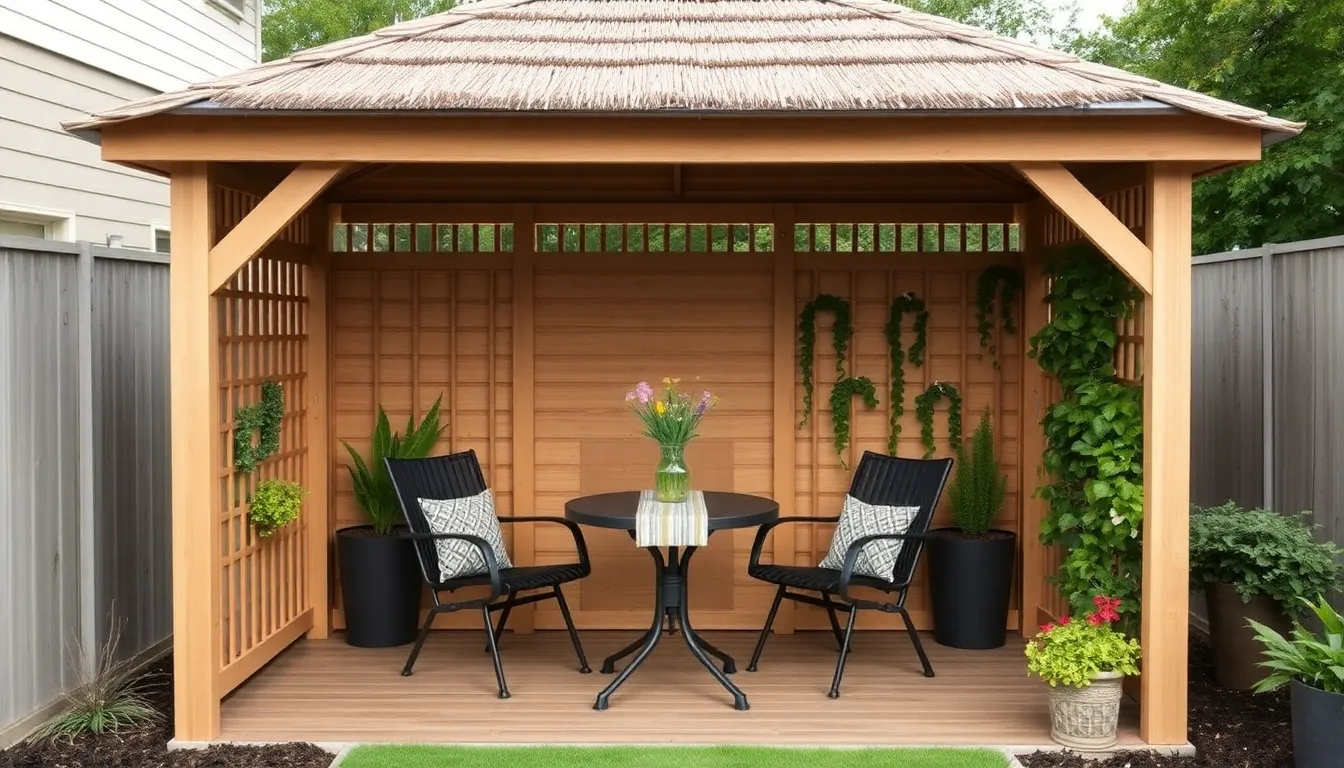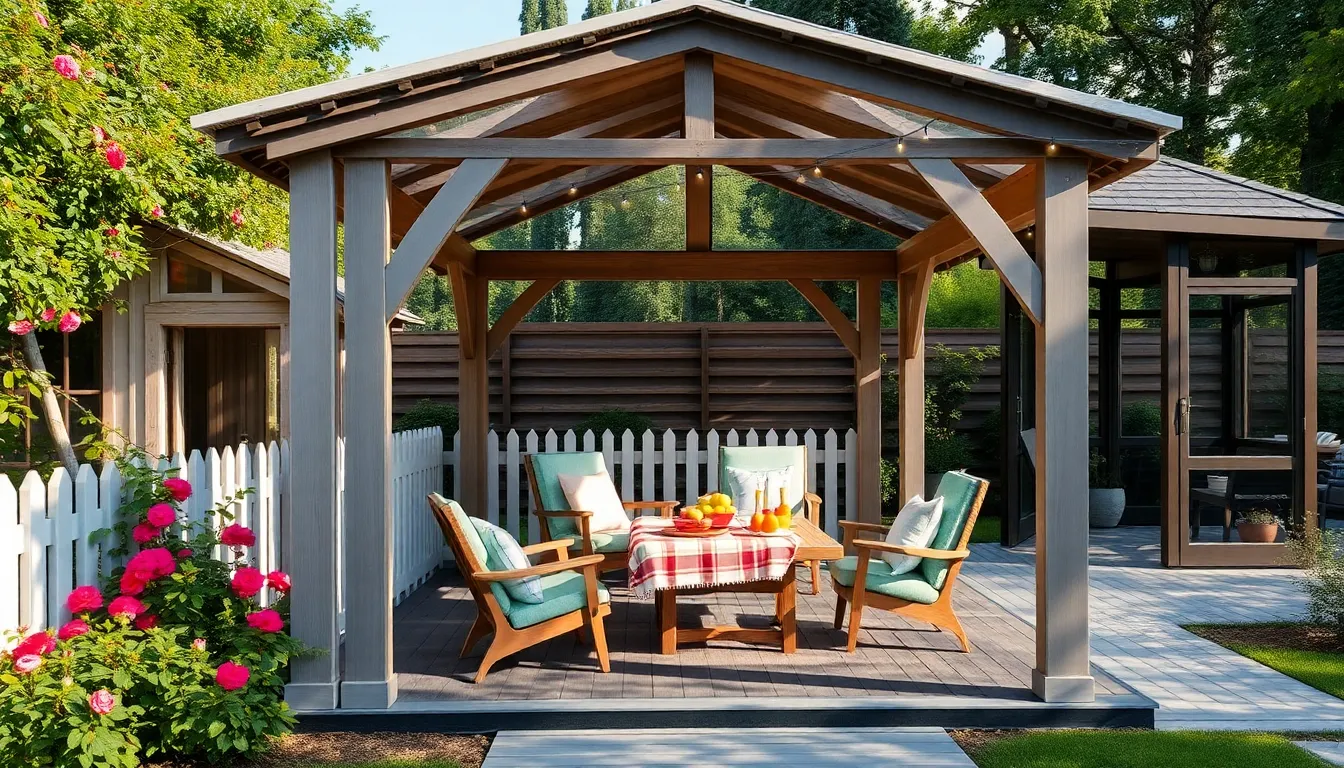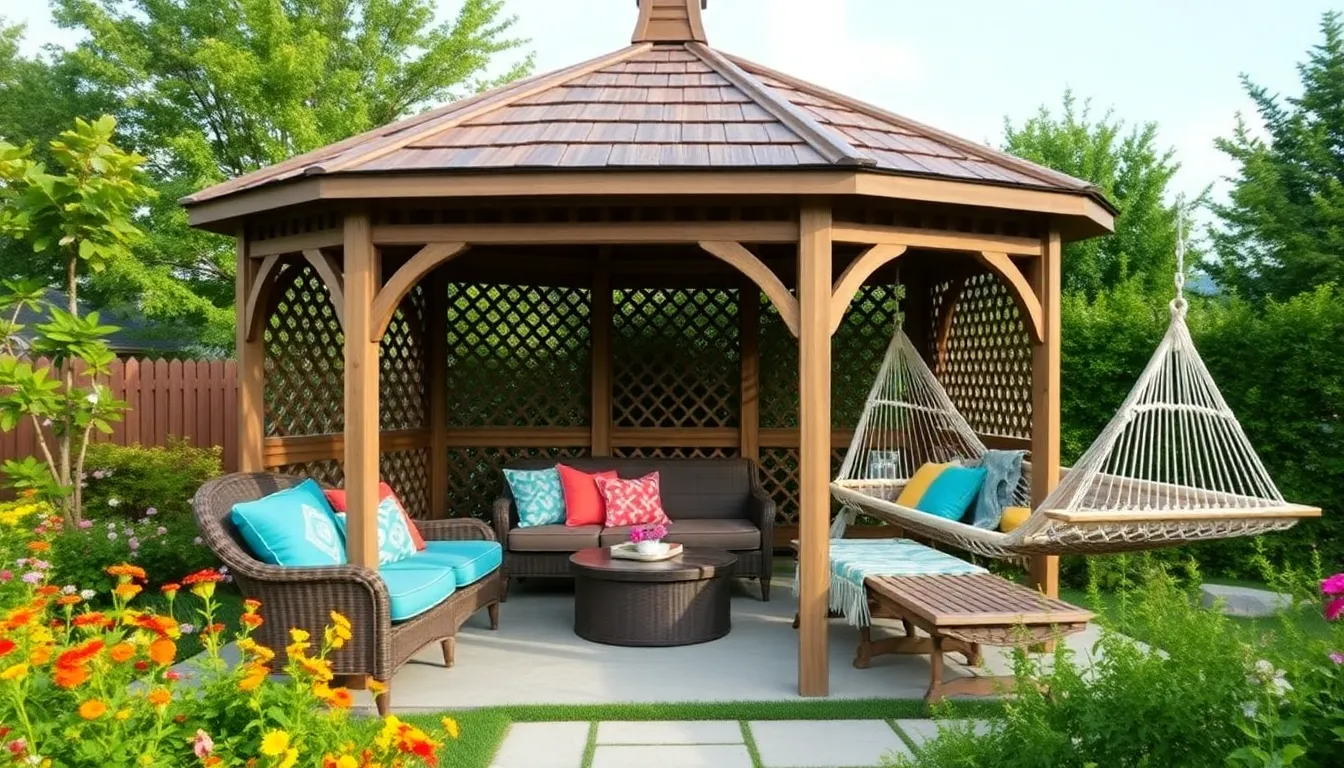Welcome to a journey where your backyard transforms into an oasis of relaxation and style with our “13 Pergola vs Gazebo Ideas (Side-by-Side Inspiration).” Whether you’re just starting to dip your toes into outdoor design or you’re a seasoned pro, this guide is packed with creative insights that cater to every taste and experience level. Get ready to explore the thrilling possibilities that these structures bring, transforming your outdoor space into a haven of beauty and functionality.
Imagine sipping your morning coffee under a pergola adorned with climbing roses, or hosting a lively evening under the elegant cover of a gazebo. This list is more than just inspiration; it’s your toolkit for understanding the practical perks these structures offer—from providing shade and shelter to enhancing the aesthetic appeal of your home. With these ideas, you’ll feel empowered to create an outdoor retreat that’s not only stunning but also a true reflection of your personal style and needs.
Choose Compatible Materials and Styles
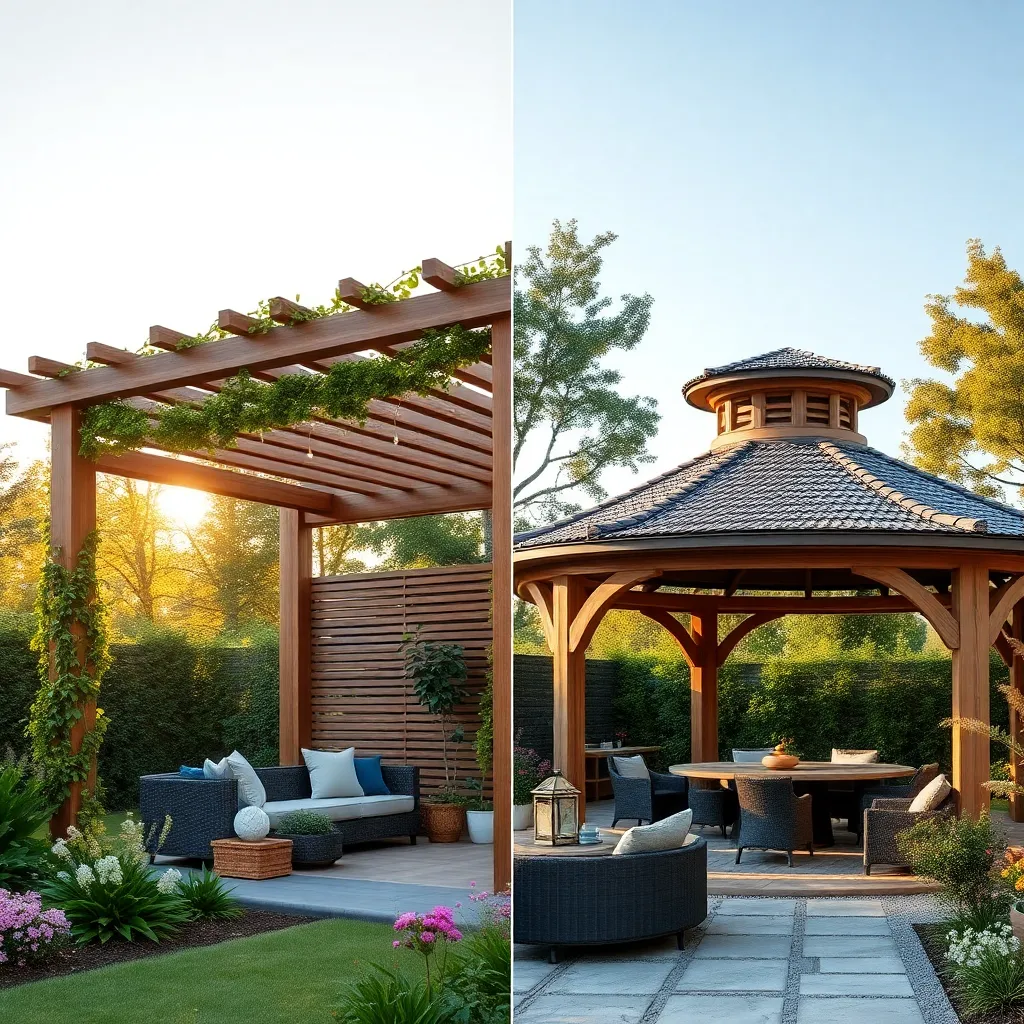
When selecting materials for your pergola or gazebo, consider both durability and aesthetics to ensure a long-lasting and visually appealing outdoor space. Wood, metal, and vinyl are popular choices, each offering distinct benefits. For a natural look, opt for cedar or redwood, which are naturally resistant to rot and insects. Alternatively, metal options like aluminum or steel provide a modern look and are highly durable against the elements. Vinyl is low-maintenance and can mimic the appearance of painted wood, perfect for those who prefer easy upkeep.
Incorporating compatible styles is essential to harmonize your outdoor shelter with your home’s architecture and landscape. Choose design elements that resonate with your existing decor, such as color palettes and architectural details. For instance, a pergola with clean lines and a minimalist design complements a contemporary home, while a gazebo with ornate carvings suits a more traditional setting.
- For a cohesive look, consider repeating materials or colors from your home’s exterior in your shelter’s design.
- Ensure the dimensions and scale are proportionate to your outdoor space to avoid overwhelming or underwhelming your garden.
Incorporate Climbing Plants for Shade
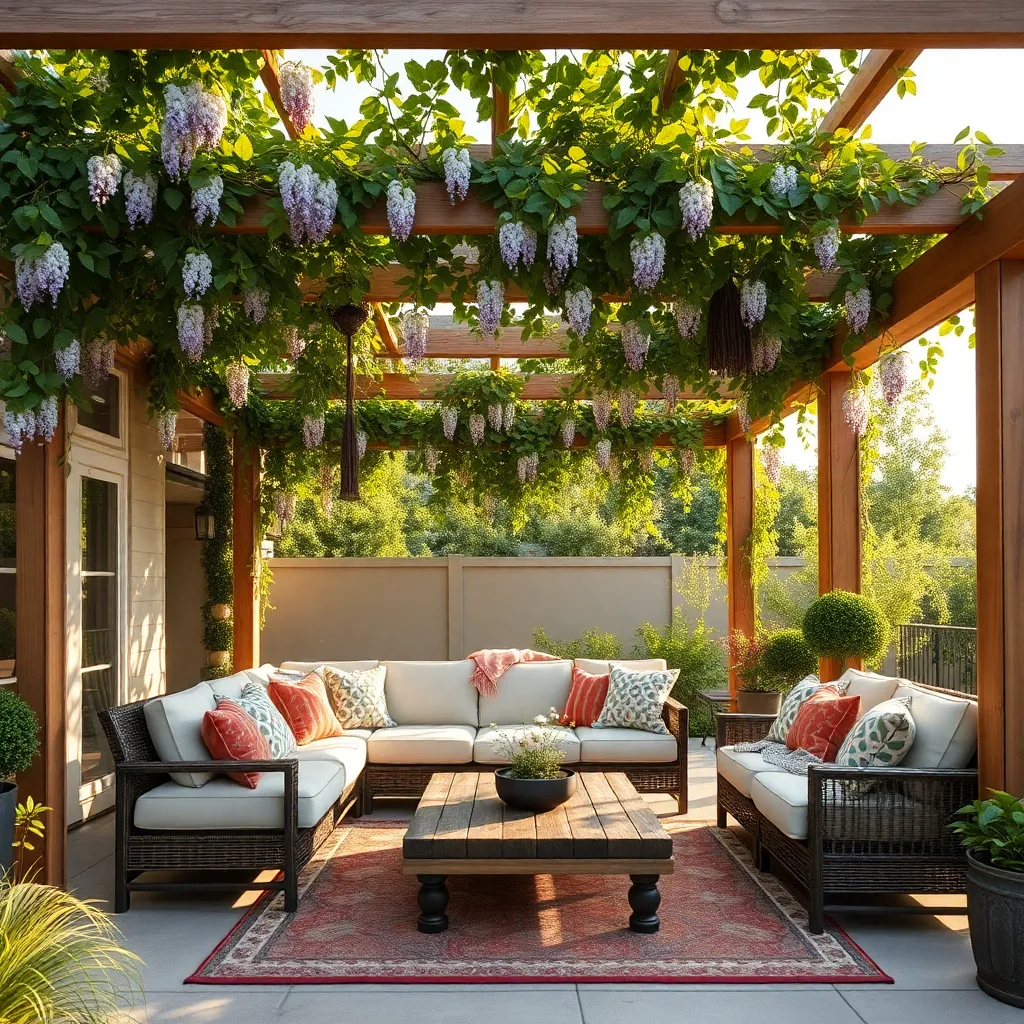
Transform your pergola or gazebo into a lush, shaded oasis by incorporating climbing plants. Start with resilient options like wisteria, jasmine, or climbing roses, which not only provide ample shade but also add fragrant blooms. Ensure your structure can support the weight of the plants; use sturdy materials like cedar or metal for the frame and attach a trellis or wire system to guide the growth of the vines. This approach enhances the aesthetic appeal and functionality of your outdoor space.
For a beginner-friendly setup, consider using fast-growing plants such as clematis or honeysuckle that quickly cover the structure and adapt well to various climates. Plan your plant placement by spacing them approximately 2-3 feet apart to allow for healthy growth and adequate coverage. Advanced gardeners might experiment with mixed planting concepts, combining different species for a diverse and dynamic look. Regular pruning and training of the vines will ensure a neat appearance and optimal shade coverage throughout the seasons.
Add Adjustable Canopies for Flexibility
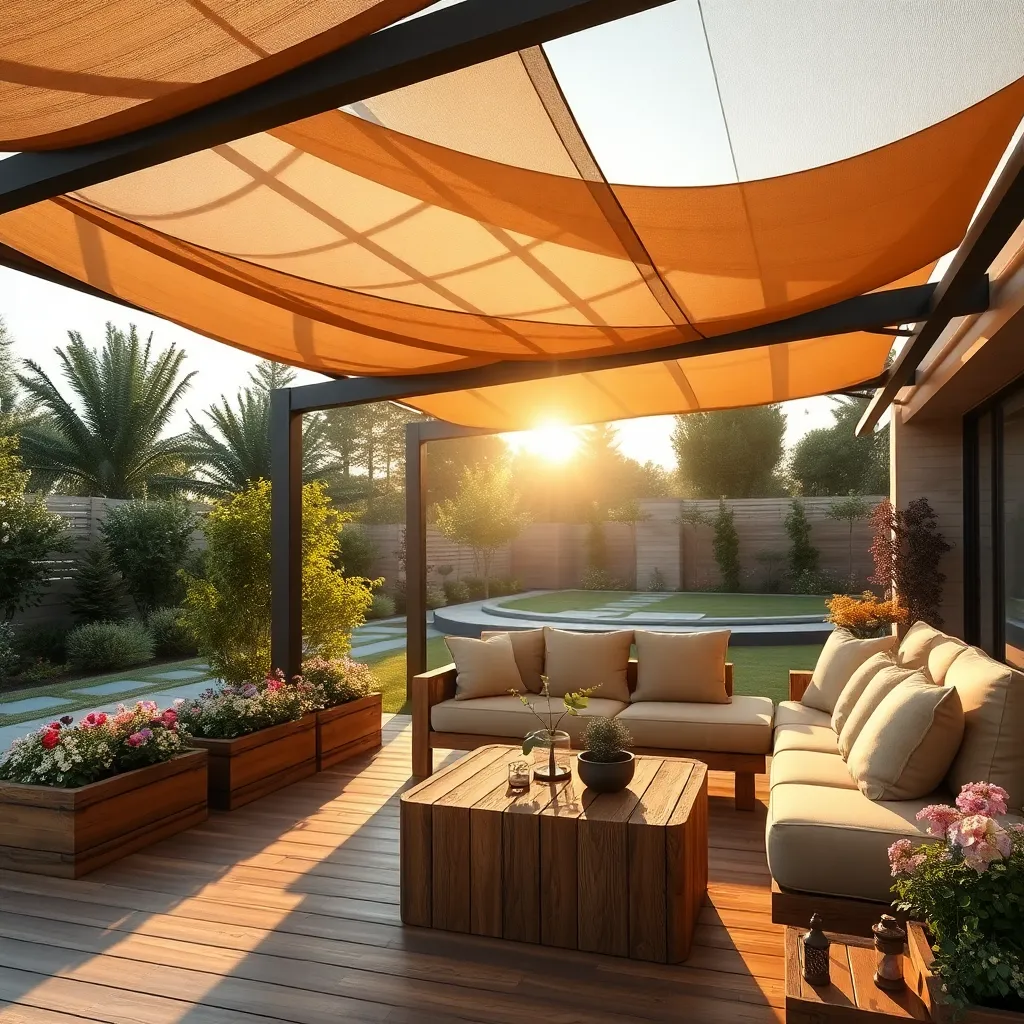
Adding adjustable canopies to your pergola or gazebo offers remarkable flexibility in managing sunlight and shade throughout the day. Opt for materials like weather-resistant fabrics or retractable louvers, which allow you to easily modify the amount of light filtering through. Beginners can start with simple, manual retractable systems, while more advanced setups might include motorized options with remote controls for ultimate convenience.
When installing an adjustable canopy, ensure the framework is sturdy enough to support the weight of the fabric or slats. Consider using aluminum or treated wood for durability and resistance to the elements. For a polished look, match the canopy material with your outdoor furniture or accessories. Remember to regularly clean and maintain the canopy fabric to prolong its lifespan, especially in areas with harsh weather conditions. This adaptability not only enhances comfort but also extends the usability of your outdoor space, making it a wise investment for any homeowner.
Utilize Built-In Seating Options
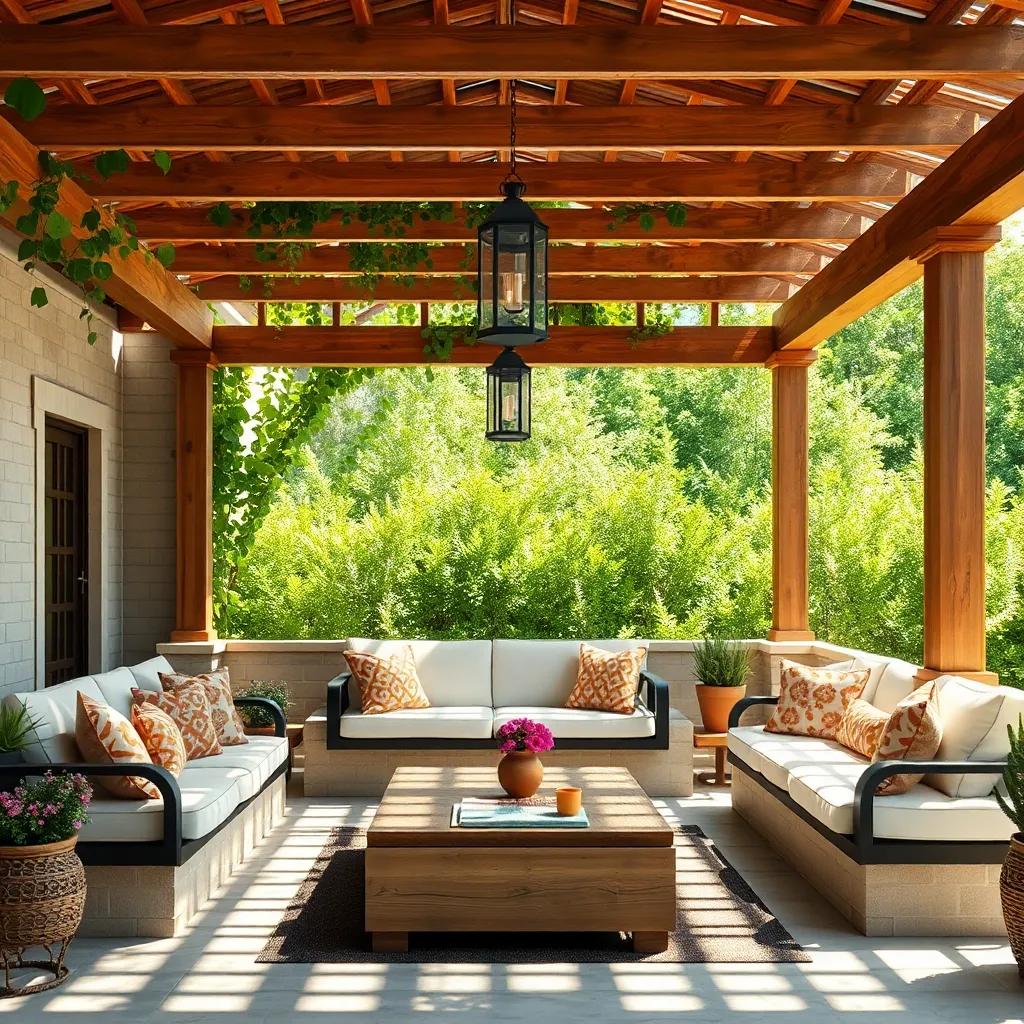
Incorporating built-in seating options into your pergola or gazebo can enhance both functionality and comfort. For beginners, consider using weather-resistant materials like treated wood or composite decking that withstands the elements. These materials are not only durable but also add a natural aesthetic to your outdoor space. Advanced DIY enthusiasts might explore integrating storage solutions beneath the seating for added convenience, using waterproof hinges and materials to keep stored items dry.
Design-wise, built-in benches can be customized to fit the contours of your structure, maximizing space efficiency. Implementing a curved seating arrangement can create a cozy focal point, ideal for social gatherings. For extra comfort, consider adding outdoor cushions made from fade-resistant fabrics. Measuring your available space accurately before construction ensures a seamless fit, and incorporating various seating heights can cater to different needs, enhancing the overall usability of your outdoor oasis.
Contrast Colors for Visual Impact

Incorporating contrast colors into your pergola or gazebo design can dramatically enhance its visual appeal. Start with a basic color palette for the structure—such as a neutral white or beige—and use bold hues like deep blues, vibrant reds, or lush greens for accents. For instance, consider painting the pergola beams in rich earth tones while using contrasting cushions and throws on your built-in seating. This approach not only creates a striking visual impact but also allows you to easily update your outdoor space with new colors as trends change.
Advanced gardeners can take contrast to the next level by incorporating contrasting materials and textures. Pairing smooth metal with rustic wood can offer a modern yet cozy feel. To achieve this, choose materials such as cedar or teak for the main structure, and add metal accents in the form of brackets or light fixtures. For the flooring, consider a composite decking in a dark shade to contrast with lighter pergola or gazebo structures. This technique provides a sophisticated look that can enhance the aesthetics of any garden setting.
Integrate Outdoor Heaters or Fans
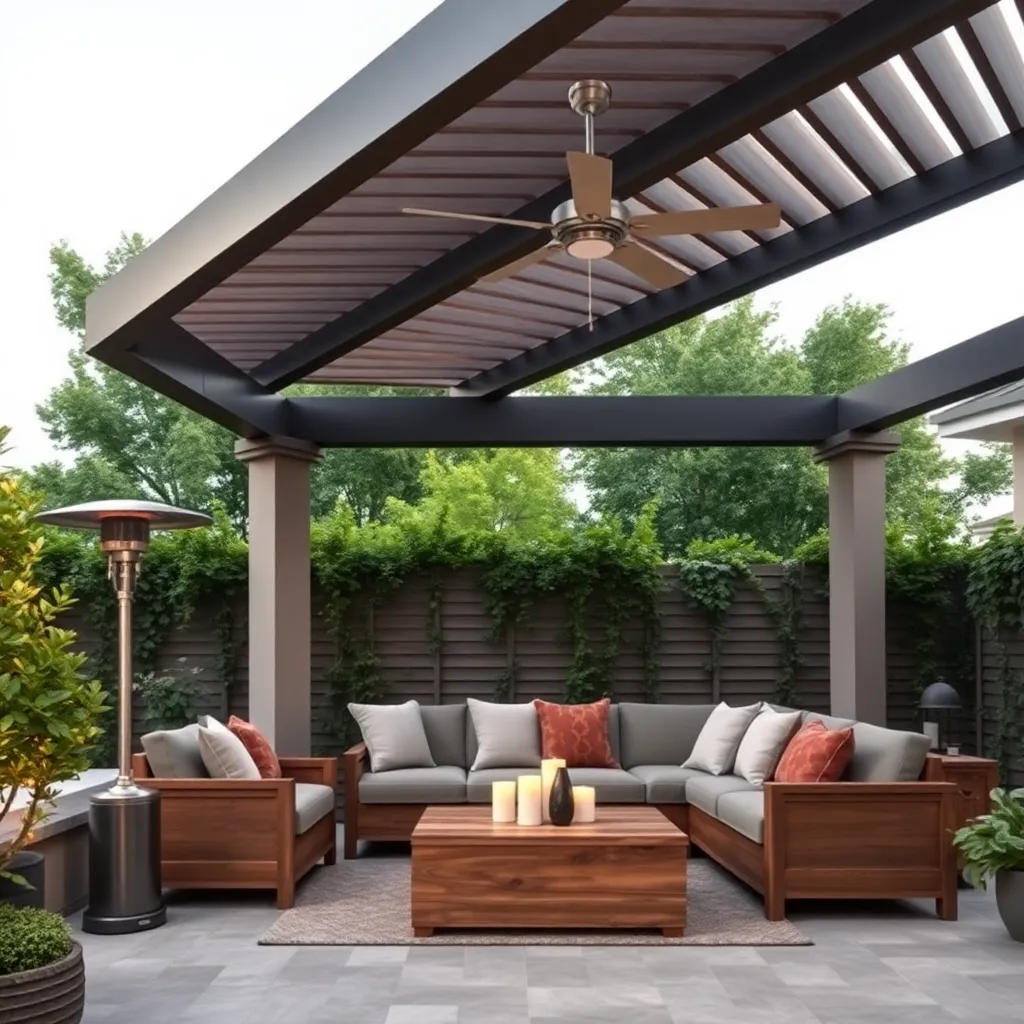
To extend the use of your pergola or gazebo throughout the year, consider integrating outdoor heaters or fans. For cooler climates, infrared heaters are an excellent option, as they efficiently warm up the space without taking up much room. Mount these heaters on support beams or hang them from the ceiling for optimal warmth distribution. In warmer areas, ceiling fans with weather-resistant blades can help keep the area cool and comfortable. Install fans with a damp or wet rating to ensure longevity and safety in outdoor conditions.
When selecting heaters or fans, match the style and size to your outdoor structure to maintain a cohesive look. A sleek, modern heater fits well with a minimalist pergola, while a rustic fan complements a wood-finished gazebo. Ensure that electrical components are properly weatherproofed and consider using a licensed electrician for installation. These additions not only enhance comfort but also add a layer of sophistication to your outdoor retreat.
Install Privacy Screens or Curtains
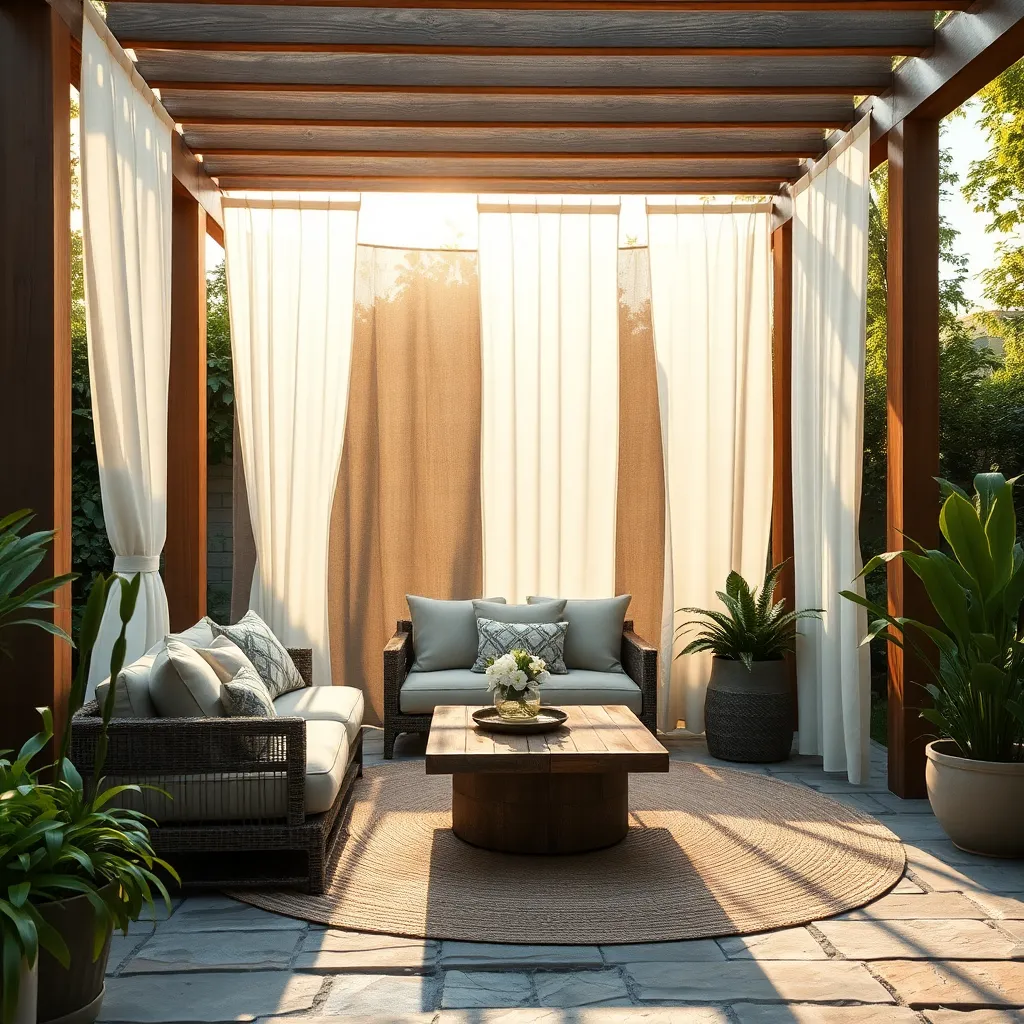
Enhancing your pergola or gazebo with privacy screens or curtains can transform your outdoor space into a more intimate and secluded retreat. For beginners, consider using weather-resistant fabric like polyester or canvas, which are durable and easy to clean. Installing curtain rods or tension wires allows you to easily slide the curtains open or closed, offering flexibility for privacy and shade as needed.
For those looking to add a touch of elegance, opt for materials like bamboo or wood for a more natural look. Ensure your screens are at least 6-7 feet in height for effective privacy. Advanced users might consider integrating retractable screens that can be adjusted with remote control for convenience.
- Choose colors that complement your existing decor
- Use weighted curtains to prevent flapping in the wind
- Consider UV-resistant fabrics to protect against sun damage
By thoughtfully choosing materials and design, you can enjoy a cozy, private haven right in your backyard.
Enhance with String Lighting Features
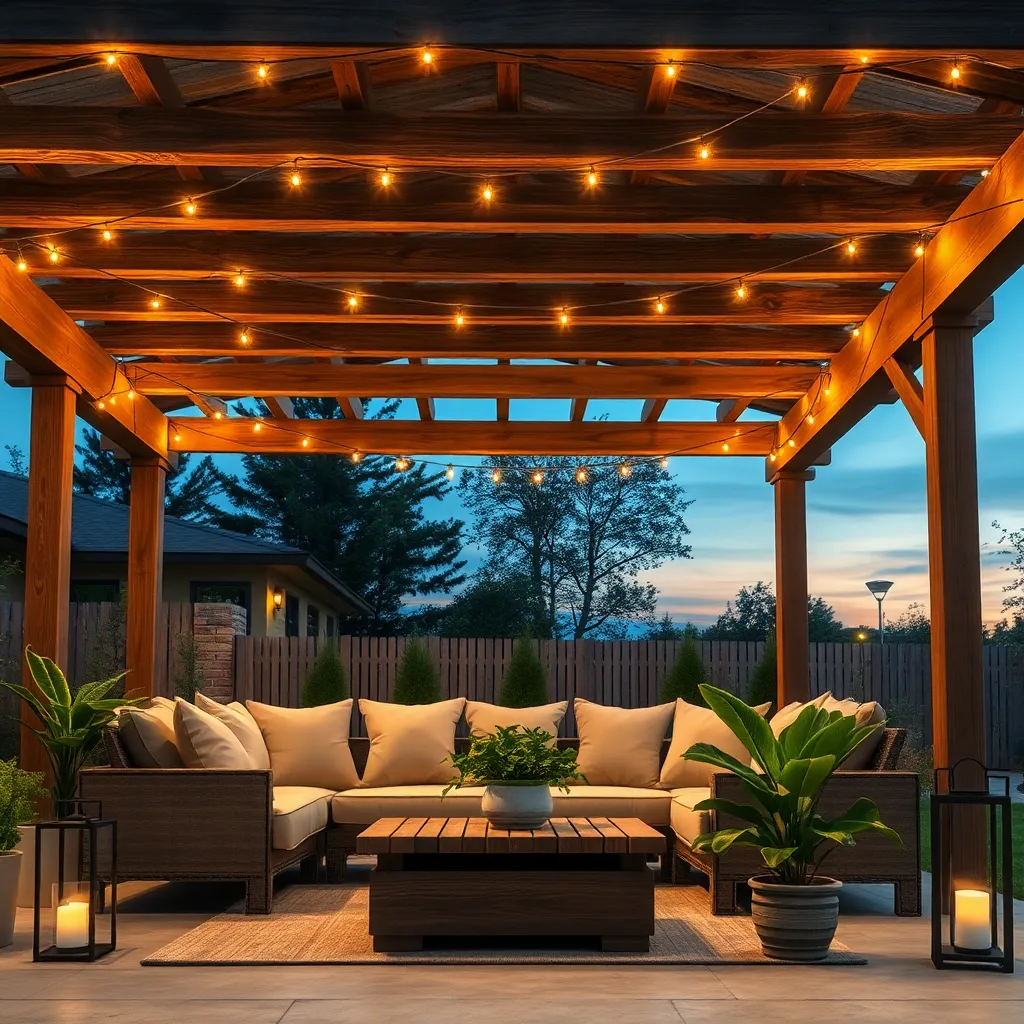
To elevate the ambiance of your pergola or gazebo, consider enhancing it with string lighting features. Opt for weather-resistant LED string lights, which are both energy-efficient and long-lasting. Begin by measuring the perimeter of your structure to determine how many feet of lights you’ll need. For a basic setup, drape the lights along the main beams or rafters. If you’re looking for a more advanced design, weave the lights in a crisscross pattern across the roof to create a canopy of twinkling stars.
When installing your string lights, ensure you use outdoor-rated extension cords and secure the lights with hooks or clips designed for outdoor use. This will prevent them from sagging or becoming damaged in harsh weather. Adding a dimmer switch can give you control over the brightness, allowing you to adjust the mood from vibrant and lively to soft and romantic. For an eco-friendly twist, consider solar-powered string lights, which charge during the day and illuminate your outdoor space at night without increasing your electricity bill.
Incorporate Fire Pits for Warmth

Integrating a fire pit into your pergola or gazebo area can significantly enhance its warmth and ambiance. For beginners, a simple, portable fire pit made of stainless steel or cast iron can be an excellent starting point. Make sure to position it at least 10 feet away from any structure or flammable materials to ensure safety. For those looking to make a more permanent feature, consider building a stone or brick fire pit. Opt for materials that complement the existing design of your outdoor shelter, such as matching the stone type to your patio or pergola pillars.
When planning the layout, incorporate seating that encourages relaxation and conversation around the fire pit. Arrange chairs or built-in benches in a half-circle to maximize both warmth and social interaction. To elevate your design, add decorative gravel or paving stones around the fire pit area for a finished look. Always ensure there is adequate ventilation and a fire extinguisher nearby for safety. By thoughtfully incorporating a fire pit, you can extend the usability of your outdoor space well into the cooler months.
Opt for Modular Furniture Sets
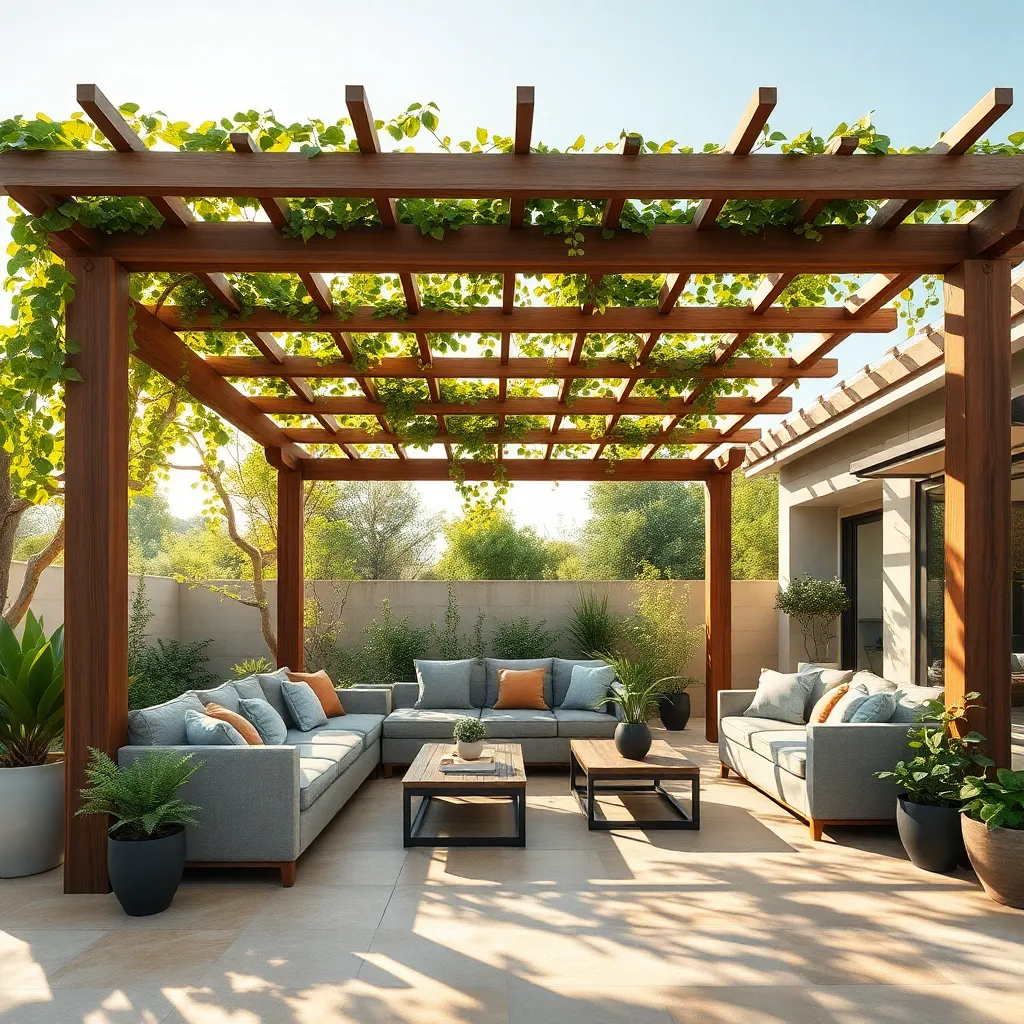
Choosing modular furniture sets for your pergola or gazebo can enhance versatility and style. Modular pieces allow for easy reconfiguration, adapting your space for various occasions, whether it’s a cozy family gathering or a lively party. Look for sets made from weather-resistant materials like aluminum or treated wicker to withstand the elements. These materials are both durable and lightweight, allowing for effortless rearrangement.
For a personalized touch, consider incorporating cushions and covers in weatherproof fabrics like Sunbrella, which offer both comfort and longevity. Mix and match different modules to create a unique seating arrangement that suits your space and needs. Advanced gardeners can utilize modular furniture to define distinct zones within their outdoor area, using sectional sofas to separate dining areas from relaxation spots. Remember, the flexibility of modular furniture not only elevates the aesthetic appeal but also maximizes the functionality of your outdoor shelter.
Mix Natural and Synthetic Elements
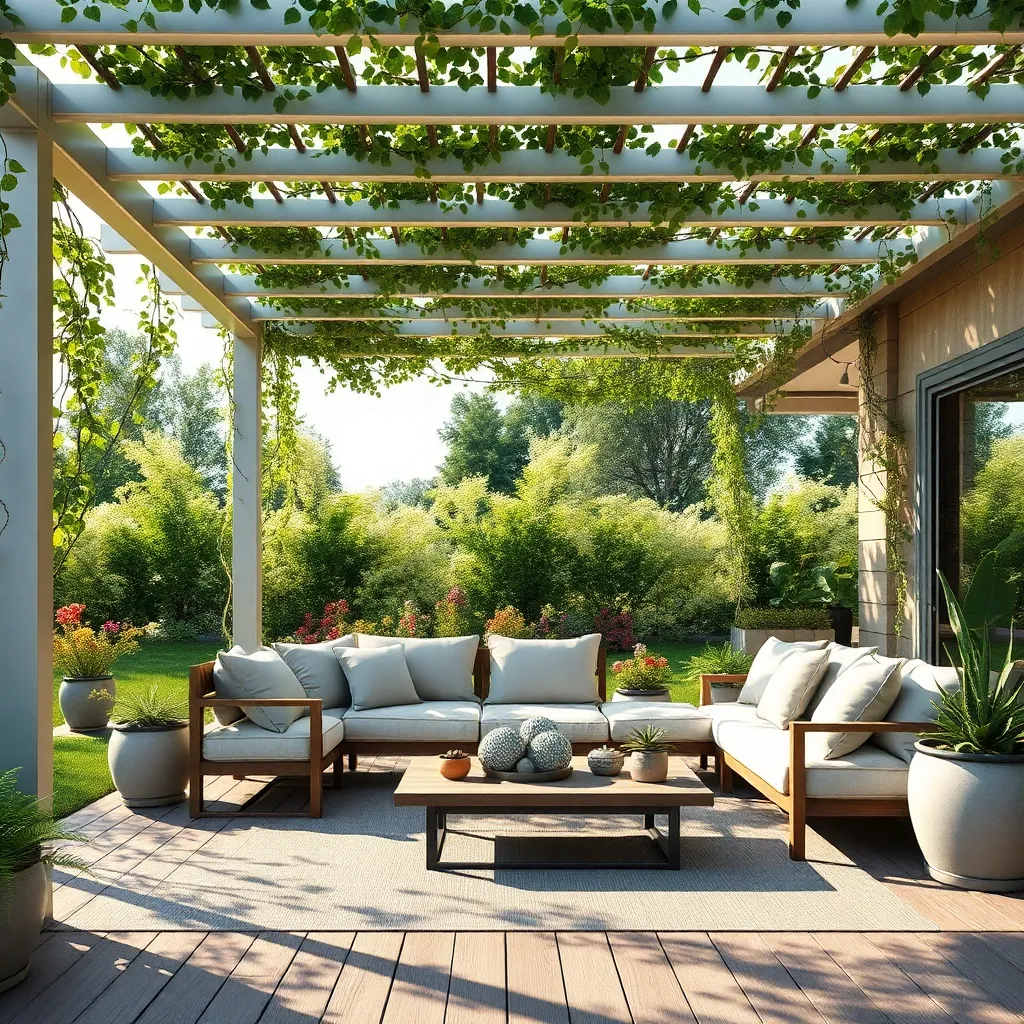
Incorporating both natural and synthetic elements in your pergola or gazebo design can create a balanced and inviting outdoor space. Start by using natural materials like cedar or teak for the primary structure, which offer durability and a timeless aesthetic. Complement these materials with synthetic options such as polycarbonate roofing or weather-resistant fabrics to provide practical benefits like UV protection and weather resistance.
For those looking to add a touch of sophistication, consider mixing in high-quality composite decking for the flooring, which mimics the look of wood but requires less maintenance. To further enhance the space, use a combination of natural stone pavers and synthetic rugs to define specific areas under the shelter. This blend of materials not only improves functionality but also adds visual interest, catering to both beginners looking for easy upkeep and advanced DIYers seeking a polished finish.
Design Pathways with Stone or Gravel
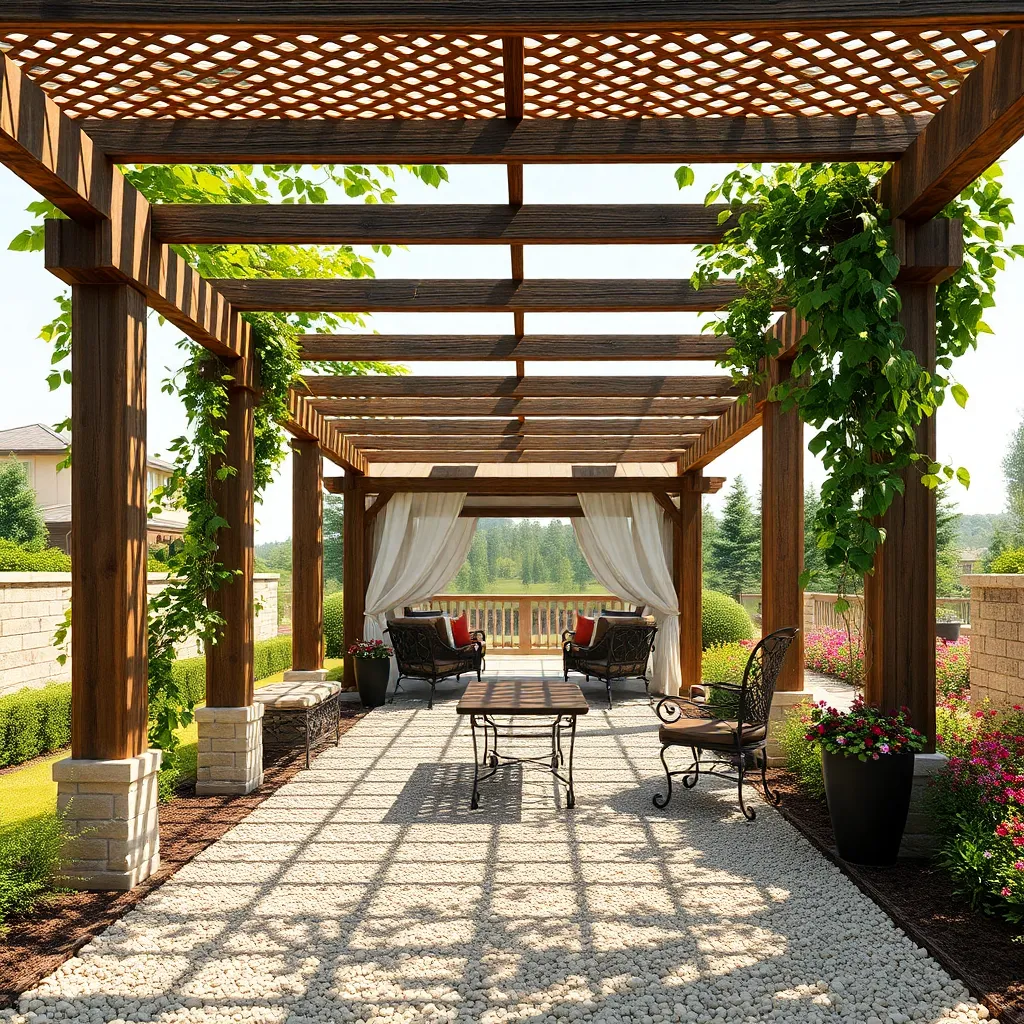
Designing pathways with stone or gravel can significantly enhance the aesthetic and functionality of your pergola or gazebo area. Start by selecting materials that complement your outdoor shelter’s style, such as using natural stone for a rustic look or pea gravel for a modern touch. For beginners, consider using crushed limestone or pea gravel, which are easy to install and maintain. Remember to define the pathway’s edges with metal, wood, or plastic edging to keep the gravel contained and your path looking neat.
For a more advanced project, consider creating a mosaic pathway using different colored stones or pavers to add a unique design element. Ensure your pathway is at least 3 feet wide to accommodate comfortable walking and wheelbarrow access if needed. Use a base layer of sand or crushed stone to provide stability and proper drainage, which helps prevent weed growth. Additionally, installing a weed barrier fabric beneath the gravel can further minimize maintenance efforts. With these tips, your stone or gravel pathway will not only be visually appealing but also durable and practical for everyday use.
Include Water Features for Tranquility
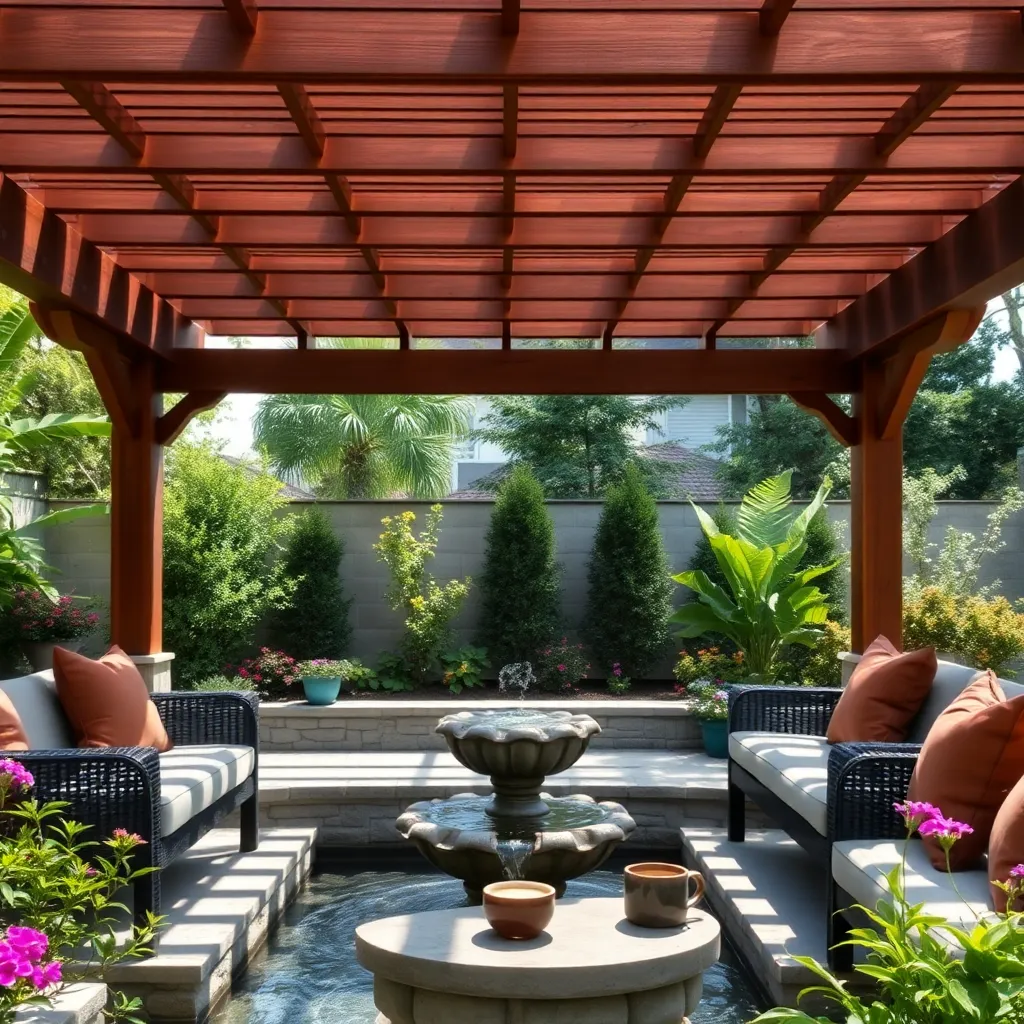
Adding a water feature to your pergola or gazebo can significantly enhance the tranquility of your outdoor space. Consider installing a small fountain or a cascading waterfall; these elements not only beautify your garden but also provide a soothing backdrop of sound that masks urban noise. For beginners, there are easy-to-install solar-powered fountains that require minimal maintenance and no electrical wiring. Simply place them in a sunny spot, and let them work their magic.
For a more ambitious project, consider integrating a pond or stream alongside your pergola or gazebo. Use natural stones to line the edges, creating a seamless transition between your water feature and the surrounding landscape. Advanced gardeners might opt for a koi pond, which requires a filtration system and regular water quality checks to keep fish healthy. To enhance the experience, incorporate aquatic plants like water lilies or lotus for added beauty and ecological balance.
Conclusion: Creating Beautiful Outdoor Spaces
In exploring the 13 side-by-side inspirations of pergolas and gazebos, we’ve unveiled a wealth of insights that parallel the diverse structures of relationships. From understanding the importance of foundational support and the strength of enduring materials to appreciating the beauty of unique designs and the necessity of adaptability, each idea serves as a metaphor for nurturing and enhancing our personal connections. We’ve delved into the balance between open spaces for growth and the comforting enclosure of intimacy, emphasizing the significance of intentional choices that reflect our values and aspirations.
Now, take a moment to reflect on these insights and choose one concept to implement in your relationship today. Whether it’s creating a shared space for open dialogue or building a sturdy foundation of trust, small, thoughtful actions can lead to significant transformations.
Remember to bookmark this article as a resourceful guide on your relationship journey. Saving this inspiration ensures you have a touchstone for future reflection and growth.
As you move forward, embrace the belief that with mindful effort and creativity, your relationships can flourish just as beautifully as any well-crafted pergola or gazebo. Your journey to lasting connection starts now.

